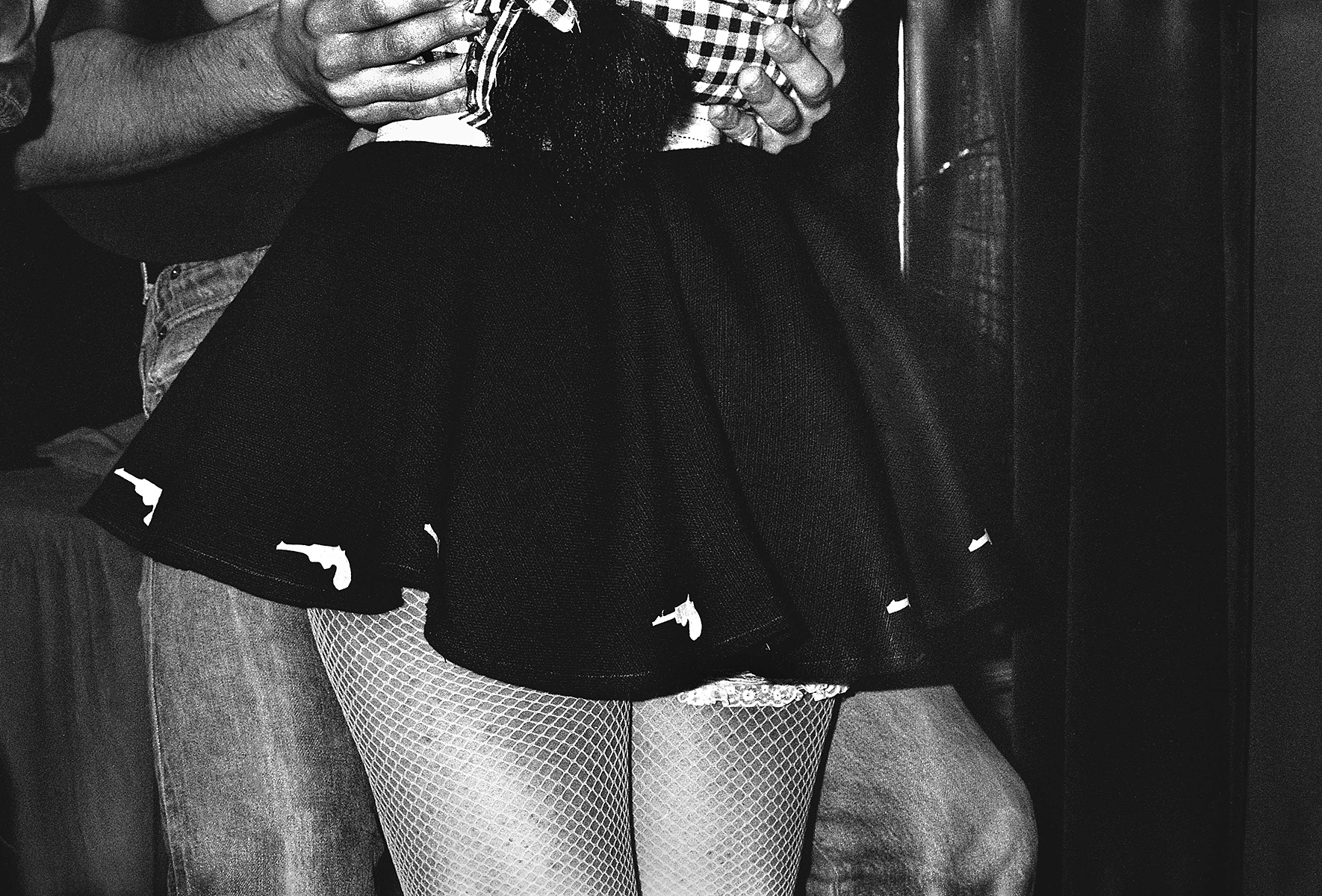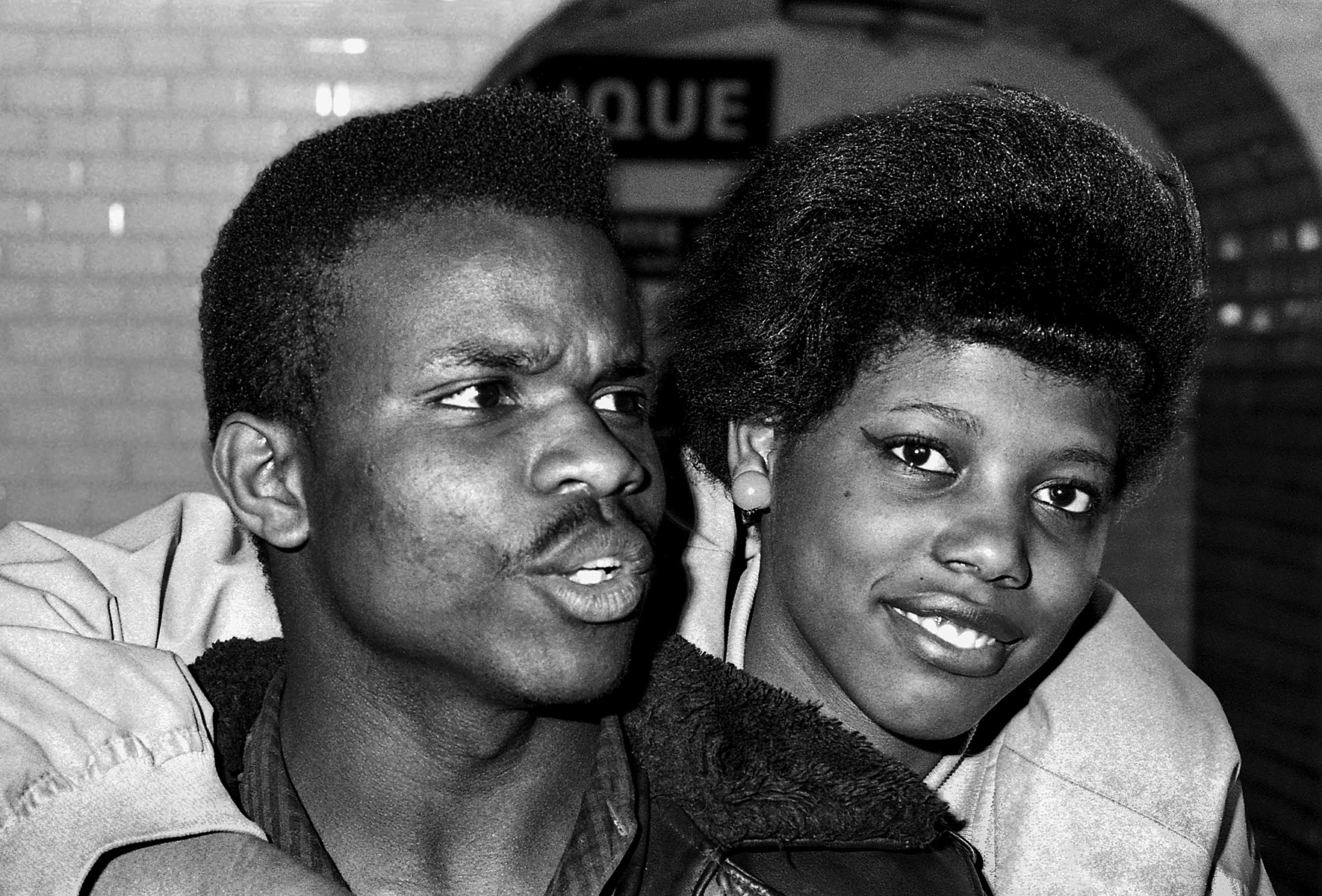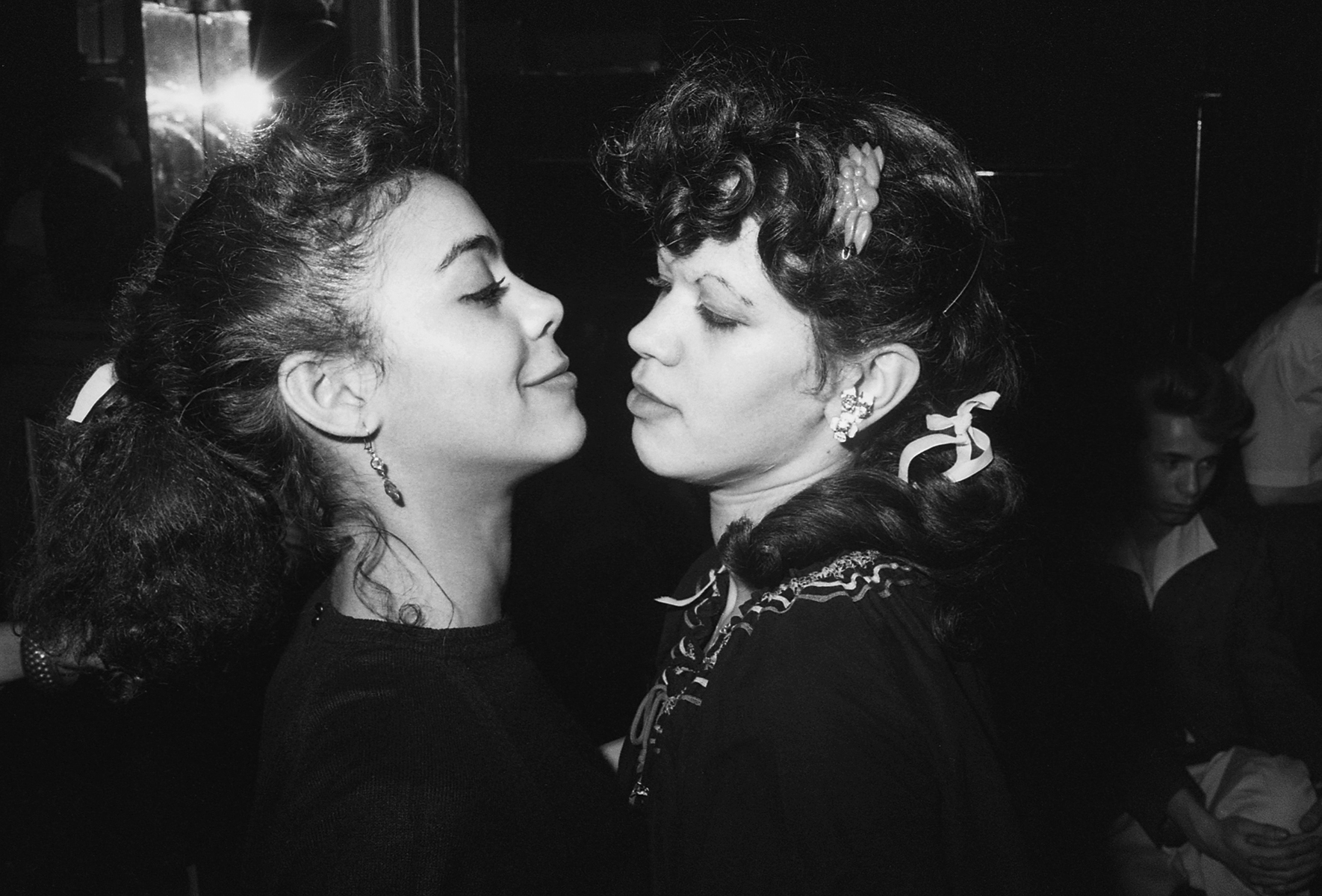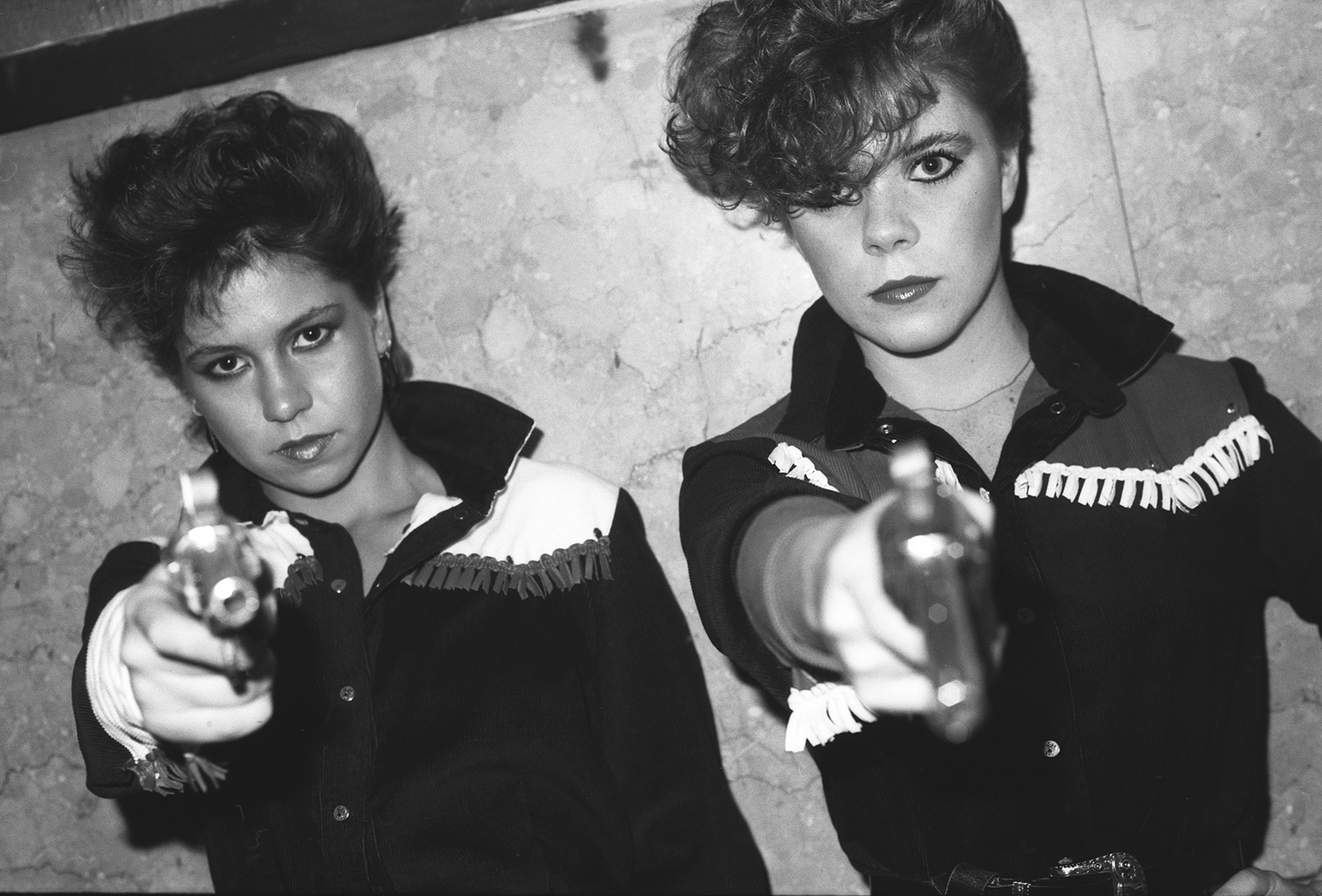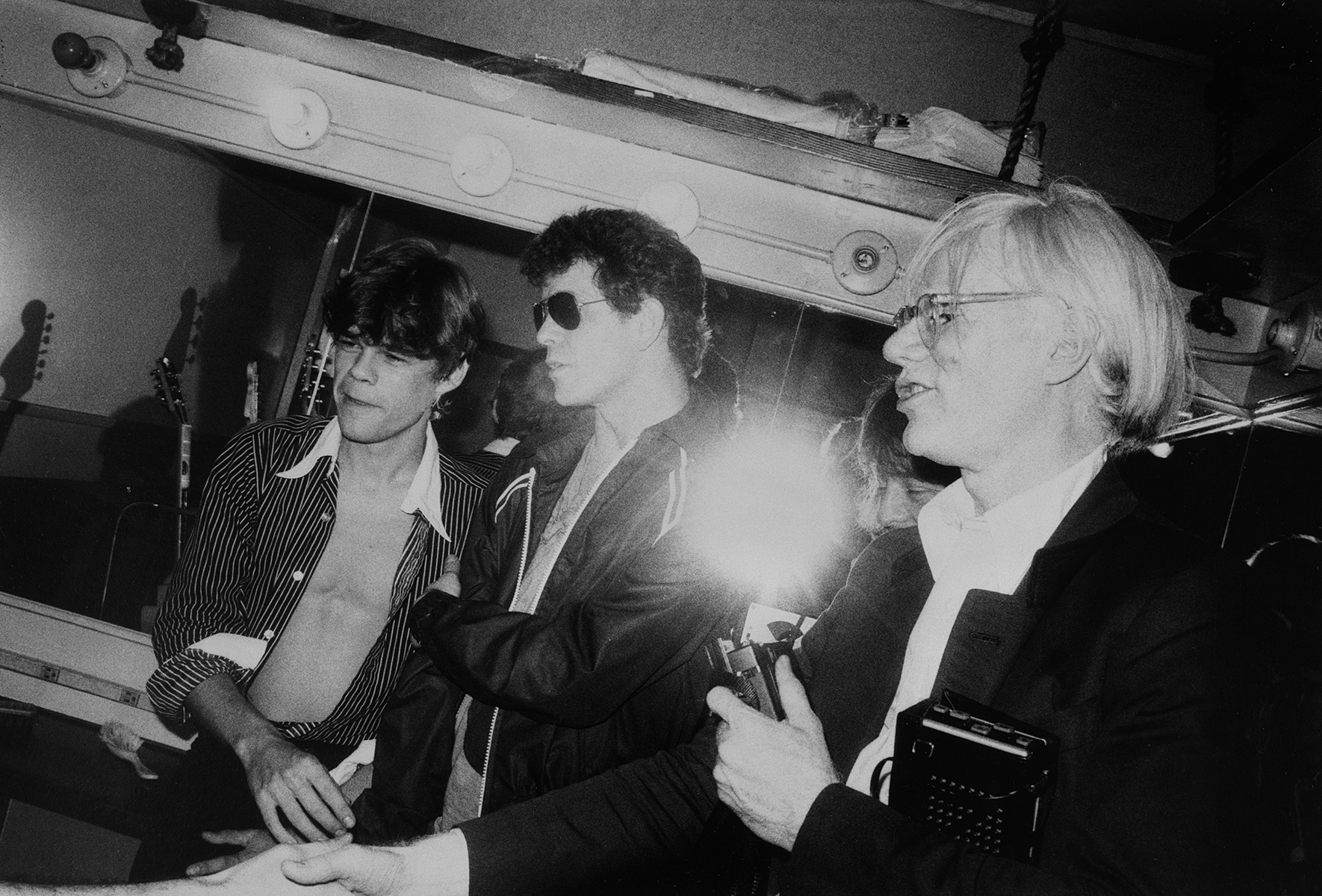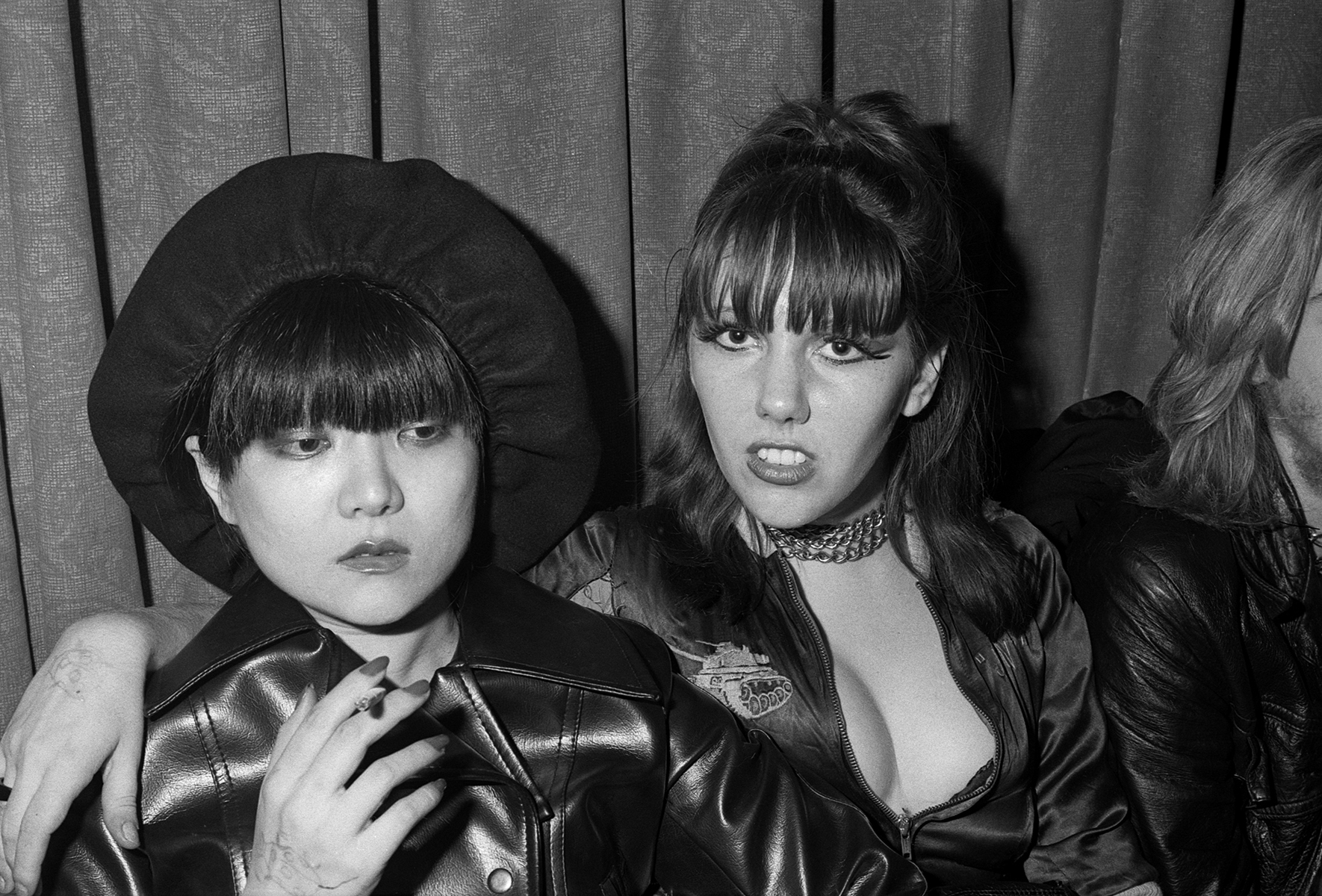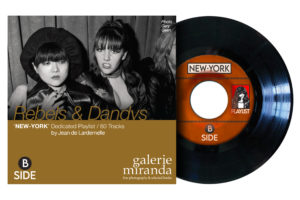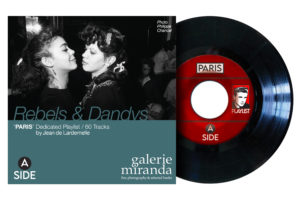Rebels & Dandys - 6 May-26 June 2021
The spring 2021 exhibition at Galerie Miranda brings together two historical and little- known bodies of photography that capture urban underground culture in Paris and New York in the late seventies and early eighties.
Philippe Chancel, Rebels - Paris, 1982
Philippe Chancel (b. 1959, France) decided in 1982 to follow and document the Vikings and the Panthers, two street gangs inspired by the culture and style of 1950s American rock 'n roll culture, with quiffs and bomber jackets for the boys, ponytails and full skirts for the girls. Chancel was intrigued by the Viking's ethnic mix, compared to the other street gangs, typically white and right wing. The Vikings were named after the Del Vikings, the first successful multiracial rock 'n roll group in 1950s America, and they were allies with the Panthers, another Paris gang made up of second generation kids from the French West Indies' colonies, taking their political cue from the Black Panther movement and their dress codes from black GIs. The Paris gangs' 'black, blanc, bleur' composition (black, white, arab) was a reaction to the growing racism in France at the time: 1983 was the year that the National Front won a seat in the municipal elections, of suburban Paris, with a discourse blaming rising unemployment on immigration.
Gary Green, When midnight comes around - New York, 1976-1986
For a decade, young American photographer Gary Green was at the heart of the New York underground music scene that was rageing against a backdrop of social and economic turmoil - homicides were at near-record highs, crack was epidemic, as was prostitution. Bryant Park and Times Square were dubbed 'Needle park' because of the widespread heroine abuse AIDS would soon come, ravaging the population even further, as recorded by artists such Nan Goldin, Peter Hujar and others. Gary Green hung out at the nightclubs Max's Kansas City, CBGB and the Chelsea Hotel where he photographed some of the decade's most iconic musicians and artists. At the time, music was everythwere in the city and key venues also included The Ocean Club, Hurrah’s, Trax and the Village Gate. “It was a rich time,” says Green, “and a small scene that was fairly easy to jump into – especially with a camera, because most people liked the attention.” Far from celebrity portraits, Green's pictures are unposed documents 'from the inside' that capture a moment in time of musical and artistic resistance to a hostile social context. Lou Reed, Andy Warhol and Joey Ramone are there, in their signature sunglasses and leather jackets, along with Alex Chilton, Joe Jackson, Tom Waits and many others. The antiestablishment ideology of the punk scene also opened the doors to women musicians such as Debbie Harry, Patti Smith, Kim Gordon; as Chrissie Hynde would comment, "That was the beauty of the punk thing: sexual discrimination didn't exist in that scene".

